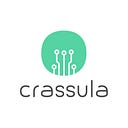For a company to hold its position on the market and stay relevant, it is important to address its dynamic capabilities. Dynamic capabilities refer to the ability to integrate and apply competencies to the rapidly changing environment. In more simple words, you have a dynamic capability when you know how to do X and every secondary thing it may involve, and apply it to different spheres. More importantly, there are also meta-capabilities — abilities to learn how to learn.
These capabilities enable firms to continually innovate, and not just once. You never know how the industry will change in the future, so you need to start dynamic capabilities within your company from the very start — keep adapting. Companies that do so are called learning organizations.
Here is what you need to know about the knowledge creation within a firm:
One of the questions that have to be addressed for dynamic capabilities is how do people learn. There are two types of knowledge: tacit — information that a person learns (from theory, word-of-mouth, etc.), and explicit — learning how to do things from experience.
How do you get organizational learning through individuals that work for you? People tend to learn better with explicit knowledge. Come up with more explicit information — perhaps, you can make some processes more routinized during a learning process. It is also necessary to keep socialization in mind — try to get everybody within your organization to get the same gut feeling (for this, you need to focus on developing a strong company culture).
The learning organization is capable of continuous regeneration from a variety of knowledge, experience, and skills of people who work there. Building a culture that encourages mutual questioning and challenges around a shared purpose or vision is a great way to keep things away from inertia (repetition). How to create such culture?
- Encourage taking risks — reward your employees for that, even if their ideas fail. You fall, but you fall forward — stand up and learn from mistakes.
- Devil’s advocacy — ask annoying questions, and allow your employees to ask them too. Dig for the underlying assumption.
- Question the opposing view — this is called dialectical inquiry. You want an issue to be addressed from different schools of thought — involve conflicting ideas in the creation process, add different perspectives. But before doing that, think through how can you resolve the tension that might arise with that.
